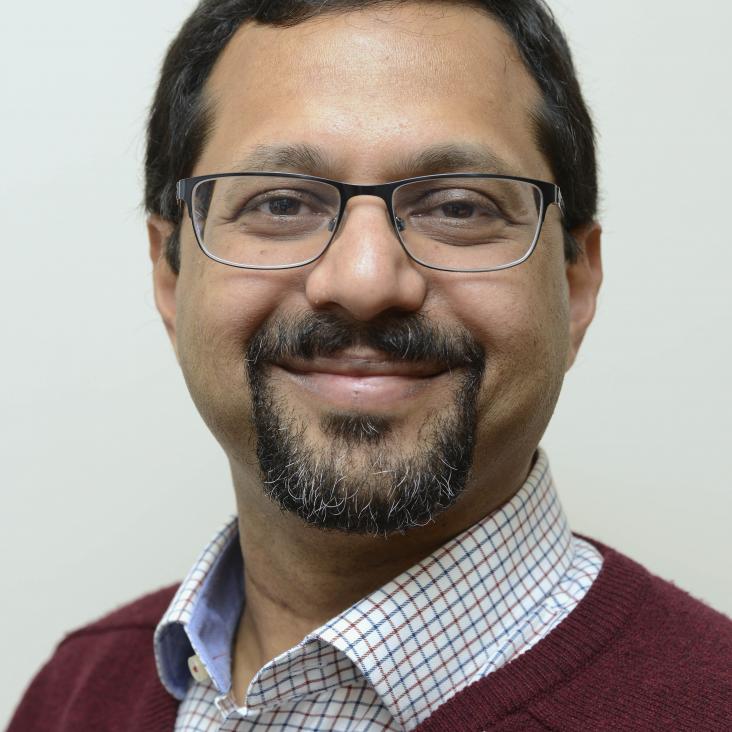HARMONI at ELT: project status and instrument overview
Proceedings of SPIE--the International Society for Optical Engineering SPIE, the international society for optics and photonics 13096 (2024) 1309614-1309614-11
Authors:
Niranjan A Thatte, Dave Melotte, Benoit Neichel, David Le Mignant, Phil Rees, Fraser Clarke, Vanessa Ferraro-Wood, Oscar Gonzalez, Maia Jones, Alonso Álvarez Urueña, Heribert Argelaguet Vilaseca, Santiago Arribas Mocoroa, José Antonio Caballero, Gonzalo José Carracedo Carballal, Alberto Estrada Piqueras, Irene Ferro, Miriam García García, Isabella Lamperti, Miguel Pereira Santaella, Michele Perna, Javier Piqueras Lopez, Nicolas Bouché, Didier Boudon, Eric Daguise, Nicola Domenis, Jérémy Fensch, Olivier Olivier Flasseur, Rémi Giroud, Matthieu Guibert, Aurelien Jarno, Alexandre Jeanneau, Jens-Kristian Krogager, Maud Langlois, Florence Laurent, Magali Loupias, Jean-Emmanuel Migniau, Dieu Nguyen, Laure Piqueras, Alban Remillieux, Johan Richard, Arlette Pecontal, Lisa Bardou, David Barr, Sylvain Cetre, Sofia Dimoudi, Marc Dubbeldam, Andrew Dunn, Dimitri Gadotti, Joss Guy, David King, Anna McLeod, Simon Morris, Tim Morris, Kieran O'Brien, Emily Ronson, Russell Smith, Lazar Staykov, Mark Swinbank, Matteo Accardo, Domingo Alvarez Mendez, Pablo Alberto Fuerte Rodriguez, Elizabeth George, Derek Ives, Leander Mehrgan, Eric Mueller, Javier Reyes, Ralf Conzelmann, Pablo Gutierrez Cheetham, Angel Alonso Sanchez, Giuseppina Battaglia, Miguel Cagigas, Julio A Castro-Almazán, Haresh Chulani, Graciela Delgado-García, Patricia Fernandez Izquierdo, Donaji Esparza-Arredondo, Begoña García-Lorenzo, Alberto Hernández González, Elvio Hernández Suárez, Javier Licandro, Enrique Joven, Roberto López López, Alejandro Antonio Lujan Gonzalez, Yolanda Martín Hernando, Ignacio Martín-Navarro, Evencio Mediavilla, Saúl Menéndez Mendoza, Luz Maria Montoya Martínez, José Peñate Castro, Felipe Murgas, Enric Pallé, Álvaro Pérez, Jose Luis Rasilla, Rafael Rebolo, Horacio Rodríguez, Luis Fernando Rodríguez Ramos, Victor Sánchez Béjar, Tariq Shahbaz, Afrodisio Vega Moreno, Teodora Viera, Mickaël Bonnefoy, Tony Bret, Alexis Carlotti, Jean-Jacques Correia, Stéphane Curaba, Alain Delboulbé, Sylvain Guieu, Adrien Hours, Zoltan Hubert, Laurent Jocou, Yves Magnard, Laurence Michaud, Thibaut Moulin, Fabrice Pancher, Patrick Rabou, Sylvain Rochat, Eric Stadler, Thierry Contini, Marie Larrieu, Sébastien Mamessier, Olivier Boebion, Yan Fantei-Caujolle, Daniel Lecron, Philippe Amram, Patrick Blanchard, William Bon, Anne Bonnefoi, Alexandre Bozier, William Ceria, Zalpha Challita, Yannick Charles, Elodie Choquet, Anne Costille, Audrey Delsanti, Kjetil Dohlen, Franck Ducret, Kacem El Hadi, Benjamin Foulon, Jean-Luc Gimenez, Olivier Groussin, Marc Jaquet, Edgard Renault, Paul Rouquette, Patrice Sanchez, Arthur Vigan, Annie Zavagno, Romain Fétick, Thierry Fusco, Cedric Héritier, Jean-Francois Sauvage, Nicolas Vedrenne, Demet Aksoy, Martin Caldwell, Ann Fitzpatrick, Carl Geddert, Peter Hiscock, Emma Johnson, Murali Nalagatla, Louise Saraff, Joe Shreeves, Matthew Tildesley, Mark Wells, Anastasios Aretos, Lee Barrett, Martin Black, Charlotte Bond, Saskia Brierley, Ian Bryson, Amelia Calderhead, Kenny Campbell, James Carruthers, Lee Chapman, William Cochrane, Rory Gillespie, Joel Harman, Douglas Harvey, Eamonn Harvey, Bethany Johnson, Tom Louth, Mike MacIntosh, Anna MacIver, Chris Miller, David Montgomery, Meenu Murali, John Murray, Norman O'Malley, Ruben Sanchez-Janssen, Noah Schwartz, Patrick Smith, Jonathan Strachan, Stephen Todd, Dawn Wasley, Sandi Wilson, Junyi Zhou, Eric Bell, Oleg Gnedin, Kayhan Gultekin, Mario Mateo, Michael Meyer, Jayne Birkby, Liam Boland, Michele Cappellari, Edgar Castillo Dominguez, David Gooding, Kearn Grisdale, Andrea Hidalgo, James Kariuki, Ian Lewis, Kieran McCall, R Elliot Meyer, Eduard Muslimov, Adam Lowe, Zeynep Ozer, Sophie Paszynska, Dimitra Rigopoulou, Matthias Tecza, Alec York


